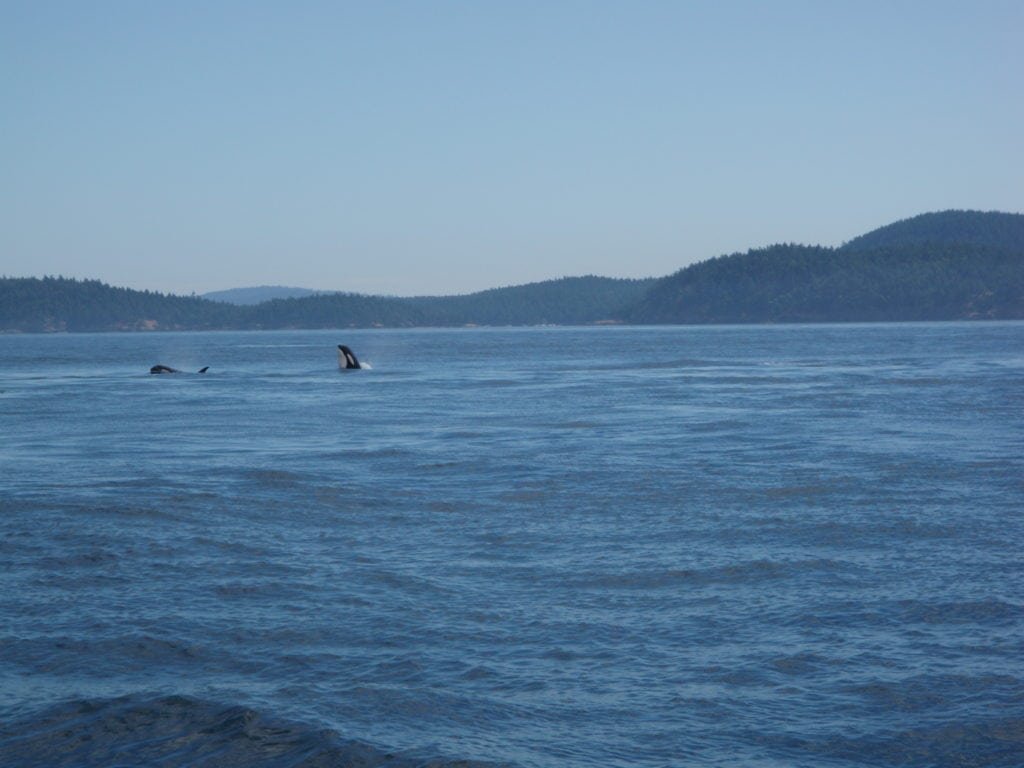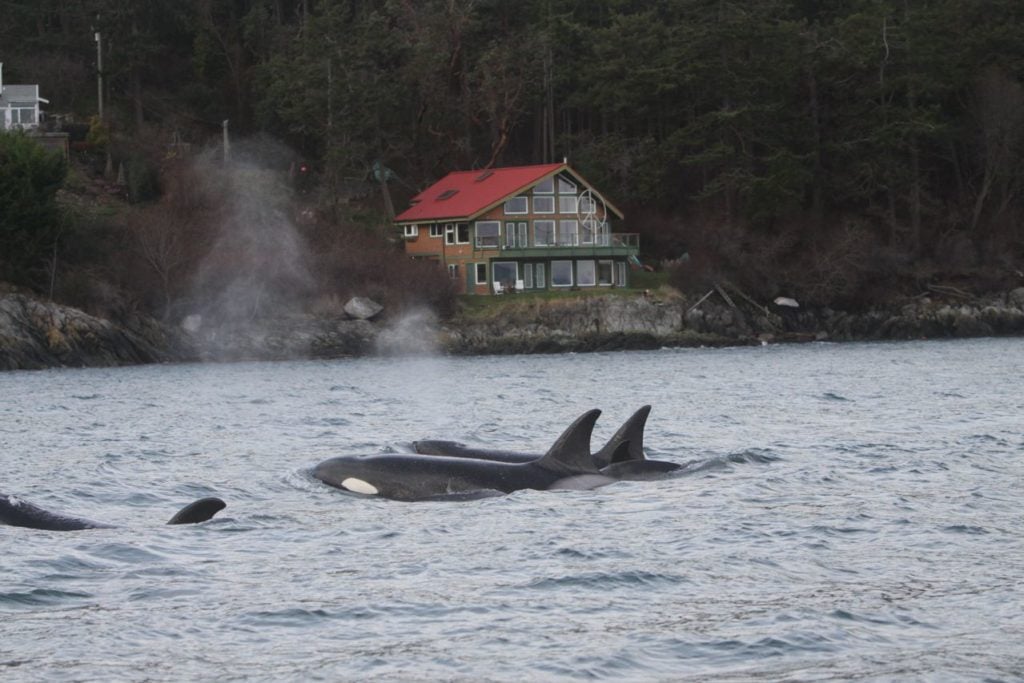
One of Our World’s Remaining Treasures
Few animals on earth give us such a sense of wonder and excitement as whales, dolphins and porpoises, collectively called ‘cetaceans’. When sailing in the Gulf Islands, our boat Tula provides a luxurious viewing platform for our frequent meetings with these Piscean creatures.
In seeing whales, we also feel a real sadness that they may not be with us much longer. A healthy future, particularly for whales, is not a sure thing. As human populations grow, so do the pressures we place on the oceans and the animals that live in them.
On Tula, we try and minimise our imprint on the oceans we travel and our cruising philosophy is to leave a clean wake behind us to the fullest extent possible.
Boundary Pass is the body of water that runs along the Canada-US border between South Pender Island (Canada) and Stuart Island (US). Strong, food-laden tides run through the Pass and all three marine animals are attracted to the salmon and bait fish that move through the area.
In winter, cetaceans appear to vanish for months at a time and whether we see them or not is sheer luck. We see humpbacks and the occasional gray whale.
In October 2009, we were travelling the Pass and fortunate to end up in the midst of a rare orca conference, the gathering of the J, K and L pods, some 87 animals. On our trips to the North of Vancouver Island, we see much more wildlife and a day rarely goes by without encountering cetaceans, seals, otters and extensive bird life.

Killer Whales Or Orca (Orcinus orca)
The killer whale or orca is the largest member of the dolphin family. There are roughly 19 pods in British Columbia waters, totalling about 300 animals. In the Pacific North-West are the three main groups, the J, K and L pods totalling less than 90 animals.
They wander from California to the top of Vancouver Island and spend considerable time in the San Juan and Haro Strait areas, just a few short miles from Tula’s Tsehum Harbour base. They are of the ‘resident’ type, live solely on salmon and other fish and reside in ‘pods’ or families that may number between 5 and 50 whales, many of which are related.
‘Transients’ are the outcasts of the orca world and number in excess of 200 animals. They travel in small groups, eat seals, sea lions and porpoises and do not mix with resident or pod orcas. Their dorsal fins are more pointed and they can be found anywhere. We have heard of them taking seals off rocky reefs in the area of the Belle Chain Islets, adjacent to Saturna Island.
Pacific White-Sided Dolphins (Lagenorhynchus obliquidens)
Sleek, smartly marked and tirelessly playful, Pacific Whitesides are easy to identify. They throw themselves out of the water and travel in groups of 20 to several hundred animals.
On our trips to Broughton Archipelago at the top of Vancouver Island, we like to travel deep into the fjords and wait until the extensive lagoons empty. These dolphins wait at the outfall from the lagoon until small fish leave with the outgoing tide and then the Whitesides snap them up. Pacific Whitesides use echolocation to find their way around and to catch their food, which mainly consists of squid, and small schooling fish such as lantern fish, herring, hake and anchovies.
These dolphins are keen to race Tula and will criss-cross her bow wave for hours on end and leap out of the water in front of the boat. After a while, they find our 6-7 knots of motoring speed way too slow; they get bored with us and head off somewhere else in search of more fun.
Porpoises
In Haro Strait, we most often see both Dall’s (Phocoenoides dalli) and Harbour Porpoises (Phocoena phocoena). If one is not paying attention, the first indication that they are beside the boat is a sharp ‘puff’ sound as they exhale air on the surface.
Dall’s are speed demons and look a little like mini-orcas. They are the most common small cetacean in the North Pacific.
The Harbour Porpoise blends very well with its environment and is dark brown to gray in colour on its back. Both types live and travel together quite happily. The Harbour Porpoise is nick-named the ‘puffing pig’ due to the sharp, puffing sound of its breath.
Viewing Whales From Tula
We regularly monitor VHF Channel 79 which is used by Canadian whale tour boat operators. The operators use their own area codes and it is fun to try and figure out just where the latest whale action is occurring.
When whales are nearby we try to maintain a 100 metre distance from the animals. On occasion, the whales will approach our boat. Whenever they are nearby, we generally shut down our instruments and depth sounder and often will switch off our engine.
Depending on conditions, we will raise our sails and sail rather than motor in order to create as little disturbance to the animals as possible. For more information:
http://www.pc.gc.ca/progs/amnc-nmca/cnamnc-cnnmca/dgs-ssg/itm5-/page6_e.asp
To see the latest Gulf Islands National Park Reserve Visitor Guide, go to:
The following link is to the Fisheries and Oceans publication “Whales, Dolphins and Porpoises of British Columbia” and is the best source of information about the three species.
http://www.dfo-mpo.gc.ca/Library/241969.pdf
On Tula, viewing wildlife is one of the many pleasures of cruising around and sailing through Canada’s beautiful Gulf Islands. Would you like to experience this? Come join us.
July 4, 2011
